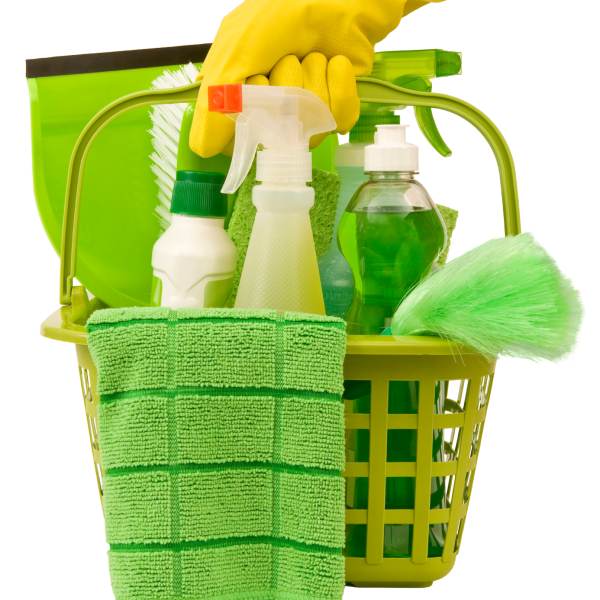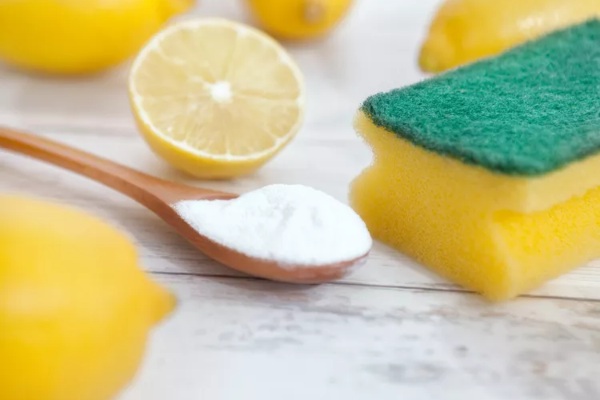Making the transition from traditional cleaning to green cleaning is a goal for many businesses. Hopefully, many people are aware of the decisions due to previous misconceptions about green cleaning. Many are suspicious about its effectiveness. What do we need to change?
Firstly, it is necessary to know what green cleaning is. There are lots of definitions. The word “green cleaning” means using cleaning products and methods that do not affect the health of the people in the house and the environment while reducing landfill waste and the human carbon footprint. This simply means using products, cleaners, or substances that:
- Contain no artificial fragrances
- Contain no chlorine
- Contain no additives or harmful chemicals
- Use recyclable packaging
Most of the cleaning items bring exposure to chemicals and toxins that can damage the health of the people in the long run and also degrade the quality of the water supply, air quality, and ecosystem balance.
Find out how to go green while cleaning your house.
What is Green Cleaning?
Green cleaning means you use only natural green cleaners like baking soda, vinegar, and lemons to clean the surfaces of your house. It also means you only use commercial “green” products that have been certified by the U.S. Environmental Protection Agency as better for the environment.
If you don’t know already, green cleaning products normally have the following characteristics:
- No phosphates
- No chlorine
- No artificial fragrances
- No artificial colors
- Biodegradable or recyclable packaging
- Organically grown ingredients using sustainable farming practices
Some green cleaning products may be certified fair trade meaning that they meet certain environmental and labor standards by their production team.
Also, Read 12 Low light succulents for your home or office
Some green cleaning items may not be free of additives or harmful chemicals but donate some amount of their profits for environmental causes. Therefore, it is necessary to carefully read all labels and follow the directions for the green cleaning products.
How to Reduce Landfill Waste While Cleaning
You can also go green by reducing landfill waste while cleaning and not just using green cleaning solutions.
- Get reusable cleaning items: You can reuse cleaning cloths, washable mopheads, and natural sponges that are made of cotton and cellulose for everyday cleaning purposes. That way, you can reduce the use of paper towels or single-use cleaning wipes that are degrading the environment. Microfiber cloths are great for polishing surfaces and trapping dirt or dust. You can thoroughly wash the cleaning cloths or heads after use and reuse them repeatedly.
- Skip single-use plastic jugs: It is good to buy cleaning product refills in paper or glass containers. Choose concentrated products with “add water” instructions. The concentrates weigh less and are often smaller. They are also easier to package and ship and ultimately reduce the greenhouse gases in transportation and shelf space.
- Reuse old toothbrushes: Dentists recommend switching our toothbrushes every three months. You can repurpose old toothbrushes for detailed cleaning purposes like cleaning grout lines, along crevices, or polishing jewelry.
How “Green” Are Green Cleaners?
The United States Environmental Protection Agency’s (EPA) Safer Choice program and Design for the Environment program mandates that labels are put on products that meet EPA’s chemical criteria.

Here are some comparisons between green and traditional cleaners:
- Some of the green cleaners are more costly than mass-produced, petroleum-based cleaning products. However, if you make your cleaners using basic pantry ingredients, the savings are significant.
- Labels that have vague terms such as “environmentally friendly” and “non-toxic” are not regulated and potentially misleading. These so-called green products may still have harmful ingredients.
- While some green cleaners are good for the environment, they may not have strong cleaning properties. To effectively kill germs and stop the spread of infection, be sure you use a product that cleans as well as disinfects.
What Different Logos Mean in Green Cleaners?
Businesses involved in green cleaning are at an advantage now more than ever before. Using eco-friendly products that do not have any harmful chemicals is becoming popular for companies who swear by sustainability. The labels on green cleaning products may be confusing because of the use of terms that many might not be familiar with.
Here is some list of labels from different brands
you might find in common green products and what they each mean:
- Green labels claim that they are safe for the health of you and the planet.
- Eco-friendly is used in products that reduce the impact on the environment.
- Non-toxic claims to contain products or substances that don’t result in adverse health effects.
- Cruelty-free claims that products are not tested on animals.
- Natural claims to be naturally derived.
While most of these terms are commonly found in cleaners today, most of their terms aren’t regulated by the FTC, EPA, or another official government entity and, as such, lack the official certifications that businesses may be looking for.
While most of the cleaning products may be eco-friendly, non-toxic, or all-natural, it can be tough to determine the claims until and unless you’re an expert.
But, there are official labels that
are regulated by 3rd-party entities that may be of use to businesses that are looking to use green cleaners:
- Certified Organic is used by the USDA to denote products that do not use GMOs or synthetic fertilizers. While more common in food, it does apply to certain cleaning products.
- Certified Biobased is used by the USDA to show how much of a product contains bio-based ingredients.
- ECOLOGO is a 3rd party certification used to show products that have reduced environmental impact.
- Green Seal is given to products that meet certain standards for sustainability. The entire life cycle of the product is reviewed, meaning that there are strict standards that a product must follow to be certified. All ServiceMaster Clean green cleaning products meet these rigorous requirements and are certified with the Green Seal.
FAQs
Q: What does “green cleaning” mean?
A: Green cleaning means using less-toxic chemicals and reusable tools to clean your home. Some widely used cleaning products have serious adverse effects on health often because many cleaning product fumes reduce the air quality in a home. Green cleaning products have less harmful biodegradability, toxicity, volatile organic compound (VOC) content, reduced packaging, and low life-cycle energy use.
Q: What are some non-toxic cleaning alternatives?
A: Products from your pantry, such as baking soda, vegetable oil, salt, club soda, and distilled white vinegar can be combined with water to create effective household cleaners. Milder cleaners like dishwashing liquid, borax, and natural soaps (Castile) have fewer petroleum-based ingredients than commercial cleaning products.
Q: Is it cheaper to use green cleaning?
A: After your first investment to purchase reusable microfiber cloths, mops, and glass spray bottles that can be reused, making your green cleaning products is less expensive than buying commercial green or regular household cleaning products.
Also, Read What is Borax? Know its amazing benefits to use around your houses
